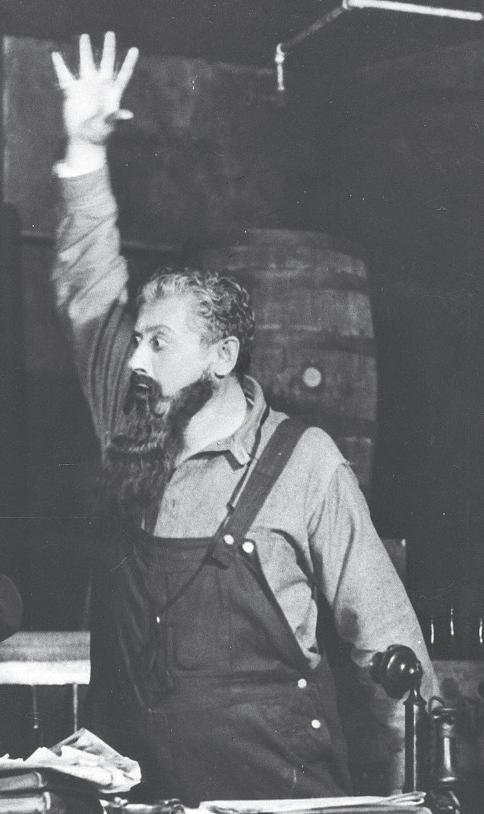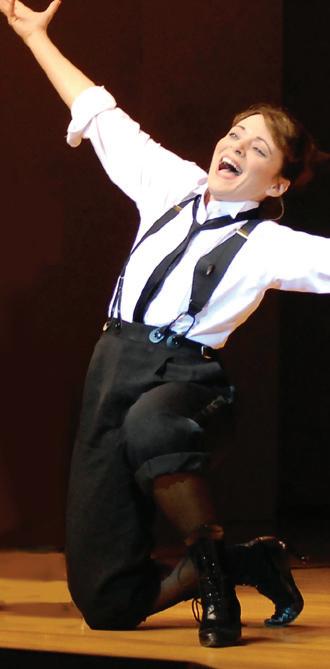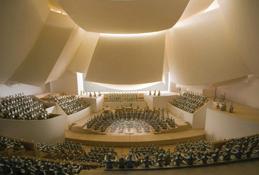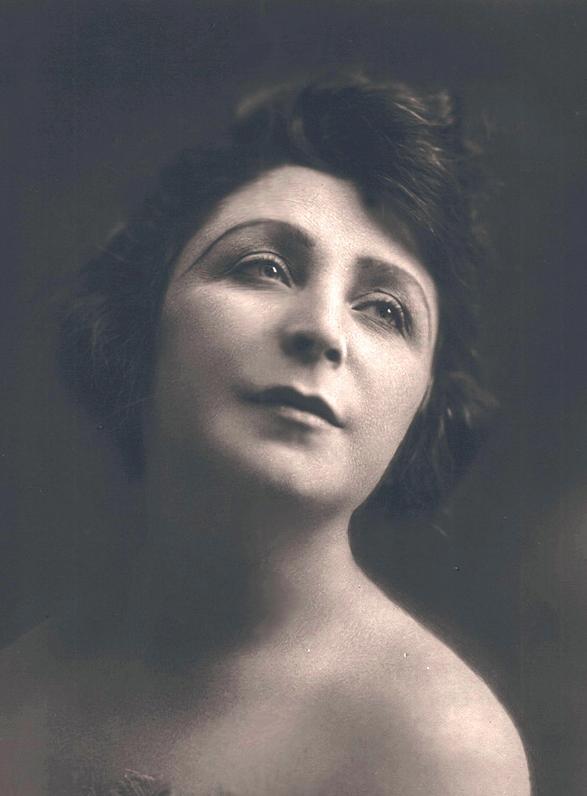The Thomashefskys:







A dark stage, an orchestra tunes in the shadows, a single spotlight shines on the face of Michael Tilson Thomas. In this intimate setting, we are at once transported into a vivid dreamscape of music and memories that light up the world of Boris and Bessie Thomashefsky, two Jewish teenage émigrés who became groundbreaking impresarios and megastars of the Yiddish theater in America…and the grandparents of Michael Tilson Thomas.
Their story is at once a quintessentially Jewish story and an American tale. The lives and dreams of the Thomashefskys were shared by generations of immigrants who came with nothing and wanted to become something. Through story and song, they helped their “landsmen” navigate the changing social realities of their times. They explored what was exciting and what was frightening about their new lives. They raised questions about the nature of American society and the costs of freedom. And their audiences adored them for it.
Having learned the melodies and back stories first-hand from his grandmother and as heir to more than 300 musical scores, scripts, writings and memorabilia, Michael Tilson Thomas has reclaimed this rich theatrical heritage and brought it back to life on the stage where it belongs.
“… an excellent use of its medium: a well-researched documentary presented as live theater. A book couldn’t have captured the Thomashefskys’ music…
A film could have included the recordings…, but it couldn’t have communicated the spark of a live performance.”
In The Thomashefskys: Music and Memories of a Life in the Yiddish Theater, the extraordinary rise of Boris and Bessie and the innovative art forms they created unfold in a kaleidoscope of show-stopping songs, dramatic and comedic pieces straight from their repertoire, mingled with first-person accounts of life back stage. At the heart of the production is Tilson Thomas, a master raconteur, who weaves these elements together with insider tales only he knows.
New York Times, April, 2005
The production also draws on the talents of an outstanding cast of four Broadway performers who capture the charisma and chutzpah of these two larger-than-life personalities with such vitality and heart you could swear you were backstage on Second Avenue or in the Thomashefskys’ living room. A 30-piece ensemble strikes up









overtures, ballads, marches and popular hit tunes from the original musicals. Period and family photos, theater posters projected overhead, audio recordings and rare footage recreate the sights and sounds of the era.
This extraordinary production has played to standing ovation crowds and critical acclaim in New York, Los Angeles, Chicago, San Francisco, Miami and Tanglewood. After 10 years spent rescuing and reconstructing the scores and scripts from fragments scattered around the country, and creating and performing this tribute, the time has come to preserve this chapter in Jewish and American life so that this legacy may be shared with generations today and those to come.
Between 1880 and 1920, two million Ashkenazi Jews from Russia and the Pale of Settlement arrived in the United States. The presence of these new immigrants transformed American society as much as it did Jewish life and identity.
The emerging Yiddish theater founded on American soil by the Thomashefskys not only reflected those transformations, it was an engine of them, turning one-time shtetl dwellers into urban “greenhorns.” Moreover, the Thomashefskys’ original productions gave rise to new forms of theatrical expression that stretch from the Lower East Side to Broadway and Hollywood. Musically, you can hear the echoes of eastern European cantorial, klezmer, operetta and village folk tunes as they blend with new American sounds, creating a fusion that would inspire the likes of Irving Berlin, George Gershwin and future Broadway composers.
The record of this early history of the Yiddish theater and how it shaped Jewish identity and America’s popular culture is largely unknown. Only one piece of film footage of Boris Thomashefsky late in his career and a few audio recordings exist. Just a handful of veterans of the Yiddish stage remain alive and only a tiny number of Yiddish theater troupes still perform here or around the world. Until recently most of the scripts and scores were uncatalogued, gathering dust in archivesarchives and attics. As a result, the major contributions of the Thomashefskys have remained unexamined and largely hidden from public view.
The live performances of “The Thomashefskys: Music and Memories of a Life in the Yiddish Theater” have allowed audiences to experience first-hand the actual music of the shows that played the theater houses of New York’s Lower East Side, and other American cities from Boston to Chicago and even San Francisco. In doing so, they have opened a doorway for audiences into the world of these new immigrants, their ancestors. Music is one of the most direct ways to evoke and transmit what it feels like to be alive in a time and place. By rescuing the cultural expressions that gave rise to their new identity as Americans, we open a “conversation” between the generations.
“Thomas and his collaborators do what the Yiddish theater artists always meant to do. They make you forget your troubles for an evening, plunge into another world and feel your own more fully in the end.”
San Francisco Chronicle, June, 2008
And it is through these “conversations” that our children and their children will come to know and appreciate this strand of their heritage. They will come to understand what was lost and what was gained in the collision between old world values and new world demands and how those choices and experiences shaped their own family histories. It is these conversations, like the ones between the young Michael Tilson Thomas and his grandmother Bessie, that form our values and our sense of where we come from.
Michael Tilson Thomas is the only direct living link to the Thomashefskys, their repertoire, the musical scores, the stories and their legacy. Committed and tireless though he is, even he cannot continue to perform this show forever. To assure continued access to this experiential tribute and secure the Thomashefskys’ place in the history that is carried forward, Michael Tilson Thomas and the Thomashefsky Project propose to film a live performance of the show at the new Frank Gehrydesigned home of the New World Symphony in Miami in April 2011. They have assembled a world-class production team and cast and secured a commitment from the PBS series great performances for a national prime-time broadcast in the 20112012 season.
b ro A dc A s T Audience
“…the Yiddish stage took on social issues too controversial for the tame broadway of the times— women’s rights, birth control, assimilation, class struggle. This was theater high and low all at the same delirious time.”
great performances is broadcast nationally on nearly 360 local PBS stations that reach 85–97% of all US TV households. On average, more than 2 million people tune in to great performances each week. Repeat broadcasts in subsequent years reach additional viewers.
The production partners (The Thomashefsky Project, New World Symphony and great performances) will develop and implement a promotion plan to attract the largest audience via advance distribution of program videos, music CDs, press materials and program guides to print, radio, television and on-line media, Jewish cultural and communal organizations, and university music and theater departments.
r e A ching Addi T ion A l Audiences
Once the film is produced, it will be made available for educational and home video distribution. There are also plans for a website to link visitors, educators and scholars to a database of Michael Tilson Thomas’ collection of scripts and scores and memorabilia bequeathed to him and primary source materials on the Thomashefskys and their era located in other collections. An educator’s guide to the broadcast program and the history of the era is also envisioned.

The Thomashefsky Project proposes to work with educational and cultural partners to disseminate the program and ancillary materials to public libraries, high schools, colleges and universities, music schools, Jewish communal organizations (Jewish Community Centers, synagogues, Jewish day schools, adult education centers) and encourage local screenings of the performance, lecture series and programming related to the Thomashefskys and their contributions.
It is our hope that the increased visibility of the Thomashefskys’ story will spur further research into this rich history and their contributions, as well as its inclusion in Jewish Studies and cultural studies curricula and related books. Through these efforts, the creative wellspring of the Thomashefskys will be available once again to inform and inspire the lives and aspirations of all those participating in the evolving American experience.
To realize this dream, the Thomashefsky Project is seeking to raise production funds from individual donors, corporations and foundations committed to opening this important window onto Jewish and American history for audiences today and future generations tomorrow.

“Fiddler-schmmiddler. This one really raises the roof.”
Joshua r obison
e xecutive p roducer
The Thomashefsky p roject (415) 673-3993
jr@mttmusic.net
l inda s teinberg
e xecutive d irector
The Thomashefsky p roject (415) 887-8547
Thomashefsky p roject@att.net

The Thom A she F sk Y p ro J ec T
The Thomashefsky project was founded in 1998 to rescue, communicate and preserve the story of the Thomashefskys and the contribution of the early American Yiddish theatre to American cultural life. Through its work, many disintegrating scores and scripts have been located, catalogued, preserved and reconstructed to recreate as true a version of the original works as possible. The stage production, The Thomashefskys: music and memories of a life in the Yiddish Theater was developed based on the dramatic, visual and musical elements from this unique collection. The Thomashefsky project will oversee the development of the website and the design and distribution of all related educational materials. The Thomashefsky project is a 501(c)(3) non-profit organization.
n ew w orld sY mphon Y
established in 1987 under the artistic direction of michael Tilson Thomas, the new world symphony prepares gifted graduates of distinguished music programs for leadership positions in orchestras and ensembles around the world. The new world symphony has launched the careers of more than 800 young musicians now making a difference in the profession worldwide.
The live performance of The Thomashefskys: music and memories of a life in the Yiddish Theater will be staged in the concert hall of the new world symphony’s new home. The Frank gehry-designed building is an extraordinary environment that promises to become a global hub for creative expression and collaboration, and a laboratory for generating new ideas about the way music is taught, performed, and experienced.
g re AT p er F orm A nces
Great Performances is the only continuing primetime performance showcase on American television. now in its 37th season, Great Performances presents a diverse repertoire of classical music, opera, popular song, musical theater, dance, drama, and performance documentaries. its programs have received every major television honor including 64 emmy Awards and four george Foster peabody Awards.
Great Performances, produced by wneT, is responsible for the national pbs broadcast of the program to the nearly 360 local pbs stations.


Music and Memories of a Life in the Yiddish Theater
securing the legacy
Joshua r obison
e xecutive p roducer (415) 673-3993
jr@mttmusic.net
l inda s teinberg
e xecutive d irector
The Thomashefsky p roject (415) 887-8547
Thomashefsky p roject@att.net